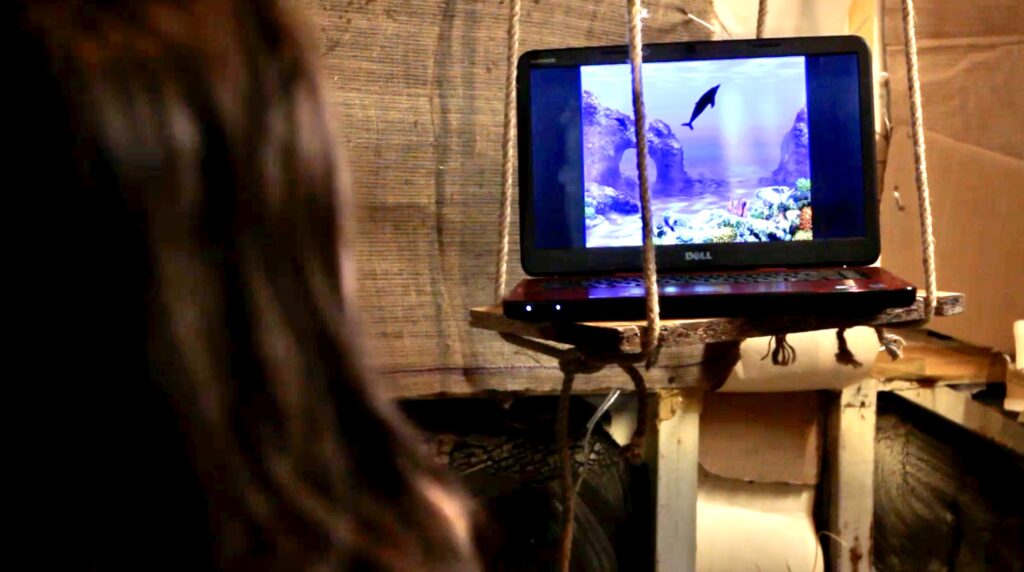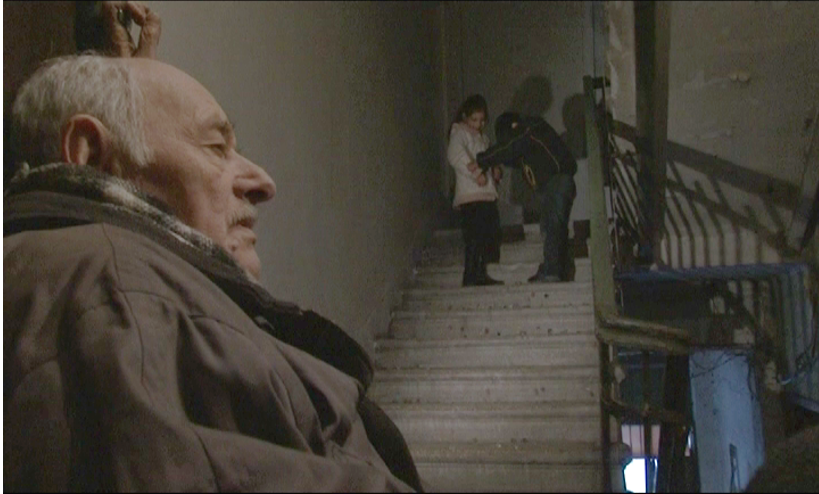Poverty is one of the most important social and economic phenomena that affects the integrity and development prospects of both the individual and society. It is defined by the lack of material, educational, or cultural opportunities, which limits a person’s social integration and a dignified life. Frequently, deprivation, poverty, and various needs destroy moral boundaries. This is the reason why poverty has become an important and interesting topic in cinema, as the visual narrative convincingly reflects the social contradictions and individual feelings that arise as a result of poverty.
Soso Bliadze’s student film, “The Most Precious” (2012), tells the story of a teenager who is sacrificed to this very social problem, who lives with a turtle in an abandoned bus and is unnoticed by society. The masses cannot perceive him as a separate, independent individual, they cannot perceive that a boy who stands in the street all day long, collecting bottles, asking for money, may have dreams, aspirations, goals, and the path to achieving these goals might not be very worthy.
The director defines the barrier between the layers for us at the very beginning of the film – while on hot summer days other children live a carefree life together with their peers, the main character of the film is standing in ripped clothes in front of the window of one of the hardware stores and cannot take his eyes off the computer, on the screen of which the ocean landscape is unfolding. From this moment, the identity and dreams of this character become clear and distinct. The days in front of this window unfold monotonously, except for one day when this boy finds that a computer is sold in the store. At this time, a new character appears, who has bought the computer. From this day on, the main character's location changes, and this time he is watching the house where his cherished dream is kept.
The next episode is very long: the boy tries in vain to get what he thinks belongs to him. The character's struggle with his passions, his inner struggles and feelings are very drawn out, although the plot is clear and simple from the very beginning - he hesitates, he is distracted, observes and, in the end, steals the computer, anyway. The director has portrayed this main character as vulnerable and helpless - a person who cannot commit a crime and live the rest of his life in peace. This can be explained by two reasons: first - how topical this is and an individual becomes a victim of social conditions, how poverty pushes him to crime, and second - this helplessness should arouse a sense of sympathy in the viewer, seduce and love the character.
One small detail should be taken into account here - the most important thing for a boy is safety and self-survival, for which he needs not a computer, but a house, care and warm food. If we analyze the plot from this angle, his behavior is explained by a quick decision based on emotions. In a word, the film would really arouse a sense of sympathy, empathy and compassion in the viewer, if its plot were not so dragged and tense.
The main roles are played by Mirian Sulakauri, Ninutsa Makashvili and Lasha Samadashvili. Their only mission is to make the audience love them and seduce themselves for 30 minutes. It is especially Mirian Sulakauri’s mission, but they are not distinguished by special acting talent and skill.
The film is technically refined and ordered. A separate shot deserves special attention, especially the episodes depicting the Makashvili-Samadashvili couple. Throughout almost the entire plot, we can see them only from a general perspective, and everything is told from the boy's perspective, which means that the audience perceives this couple not as a social unit, but as a symbol of wealth, comfort and stability, which the main character lacks the most. This method is very original and interesting.
As a rule, student films are not distinguished with very sophisticated direction, plot or acting skills. They are more of a completed task than a perfect film. Soso Bliadze's “The Most Precious” more or less belongs to the category of such student films.
Tinatin Asatiani






